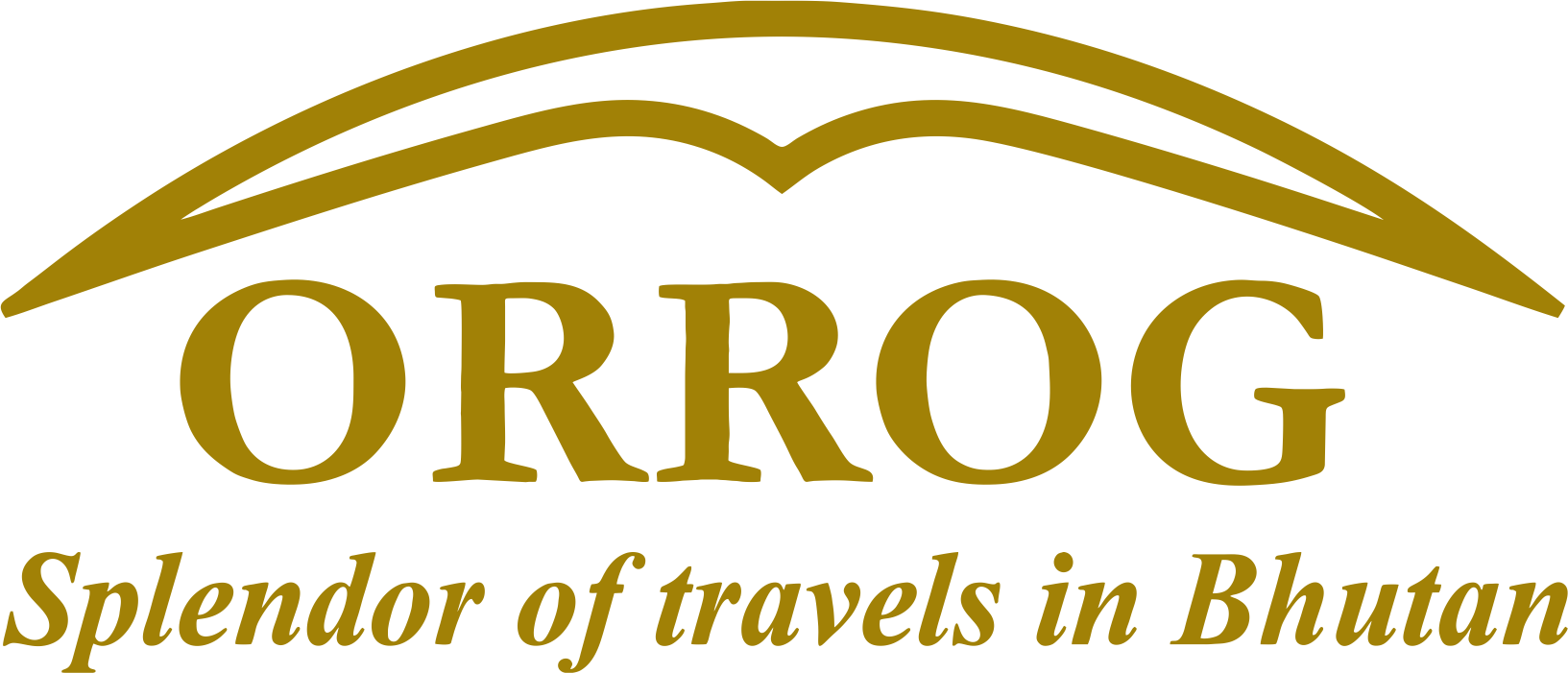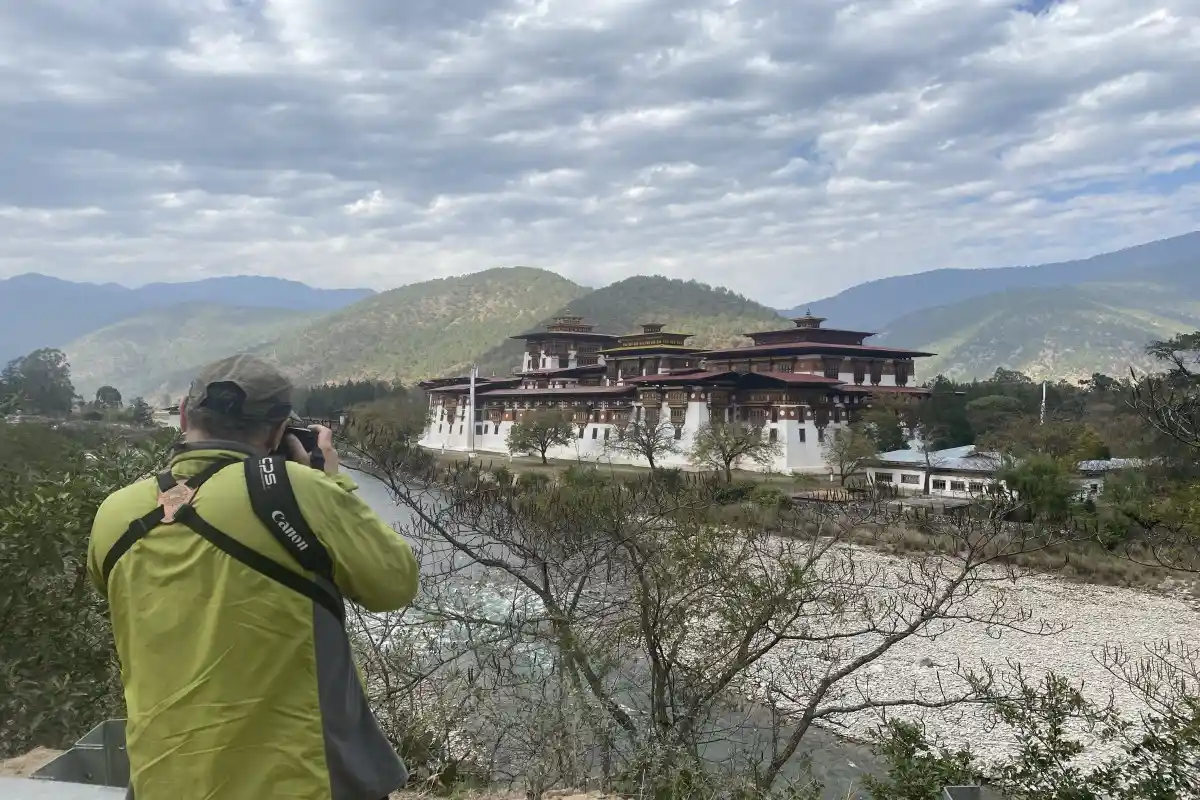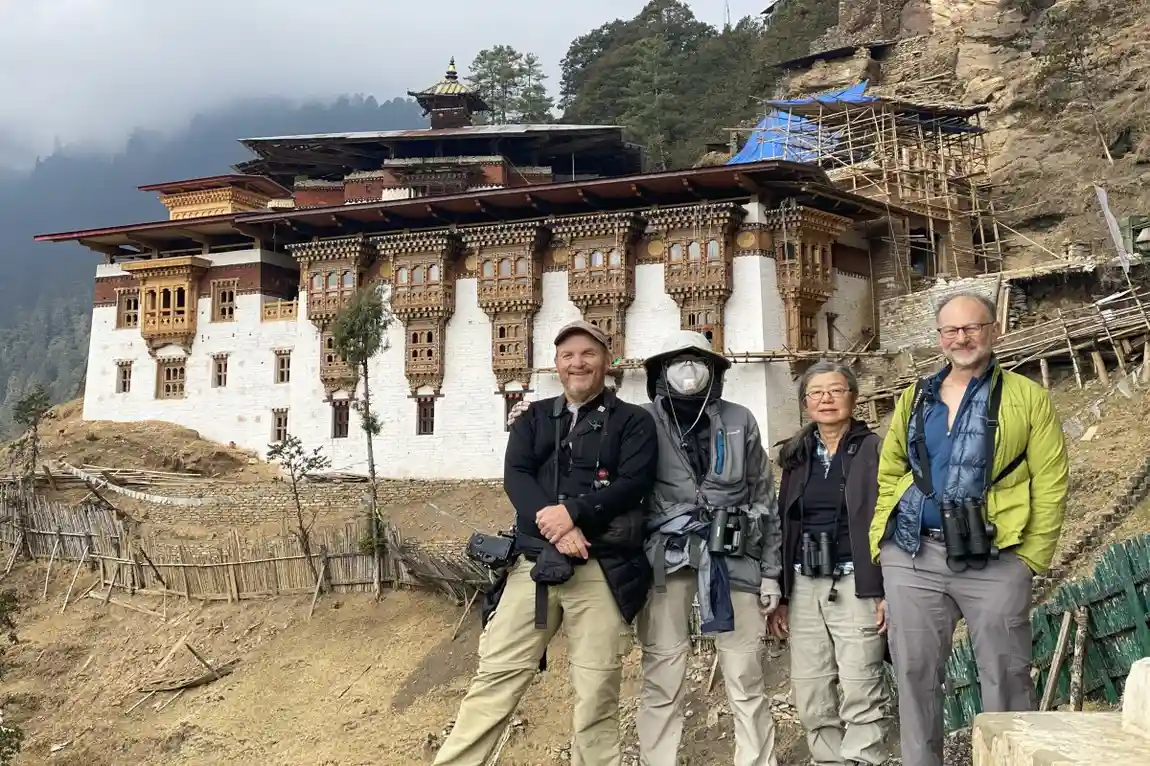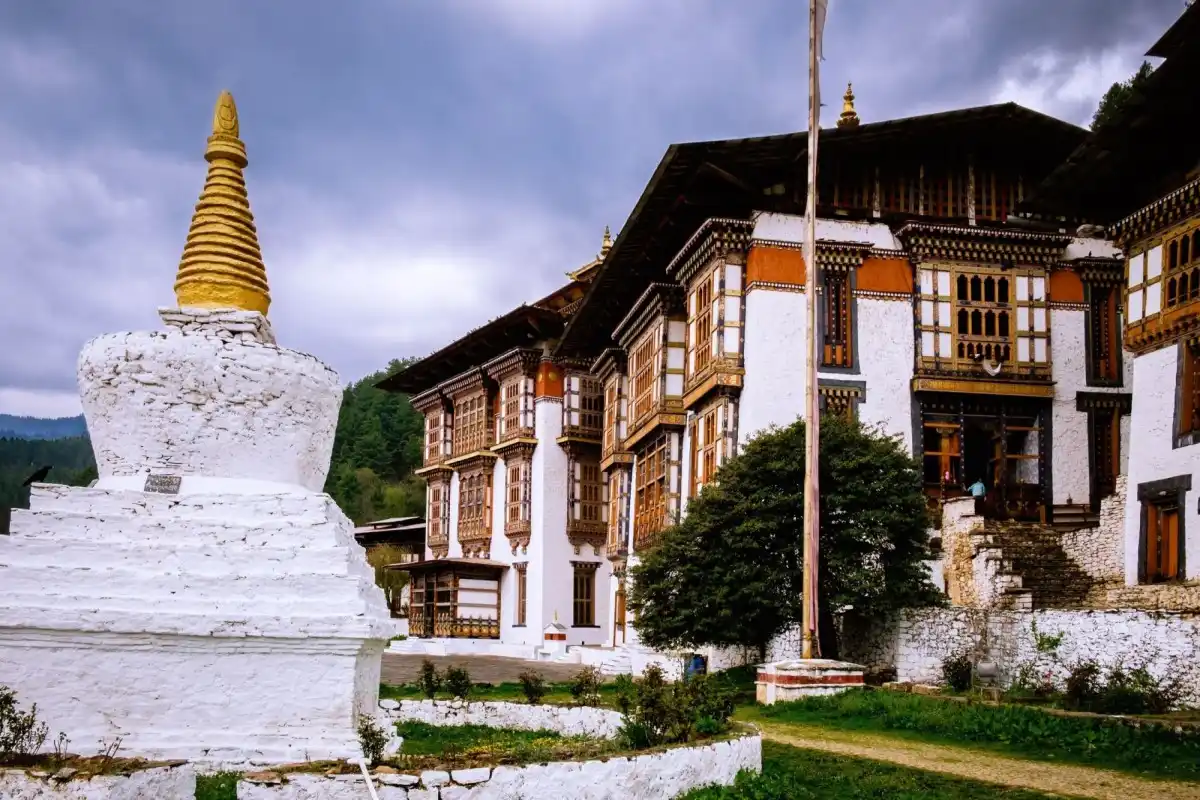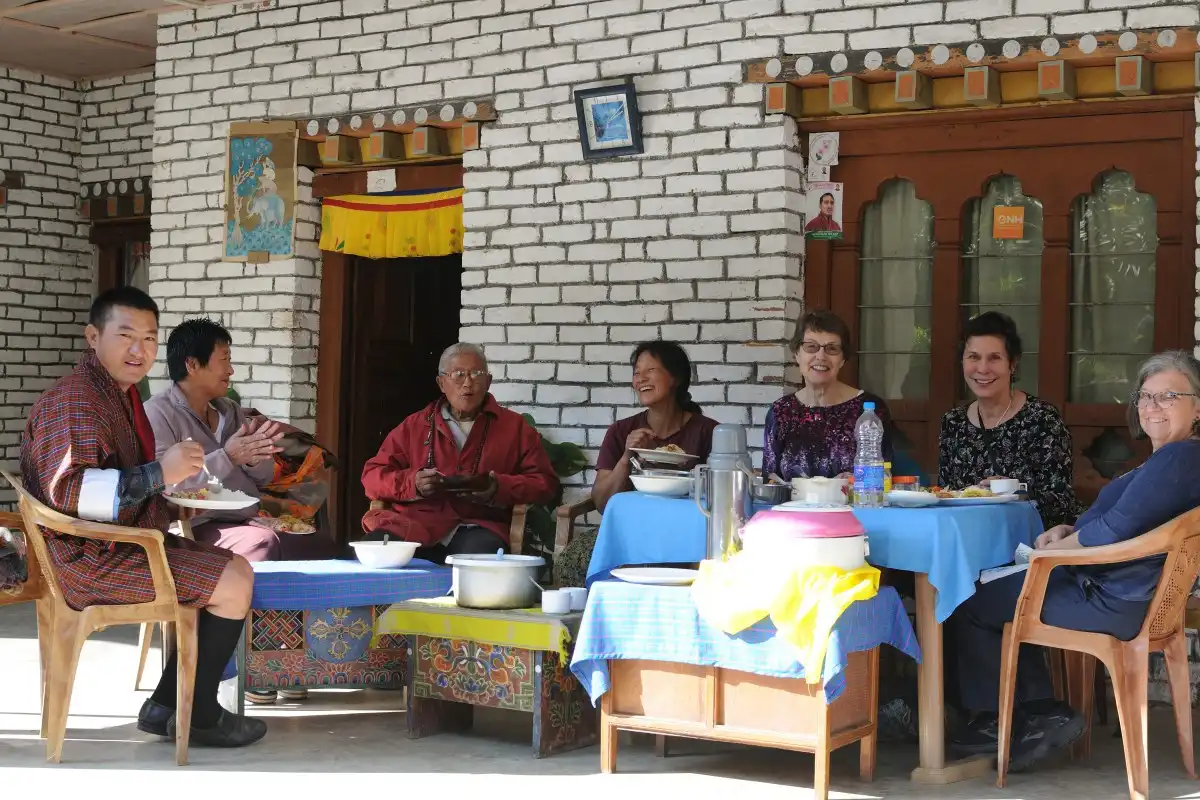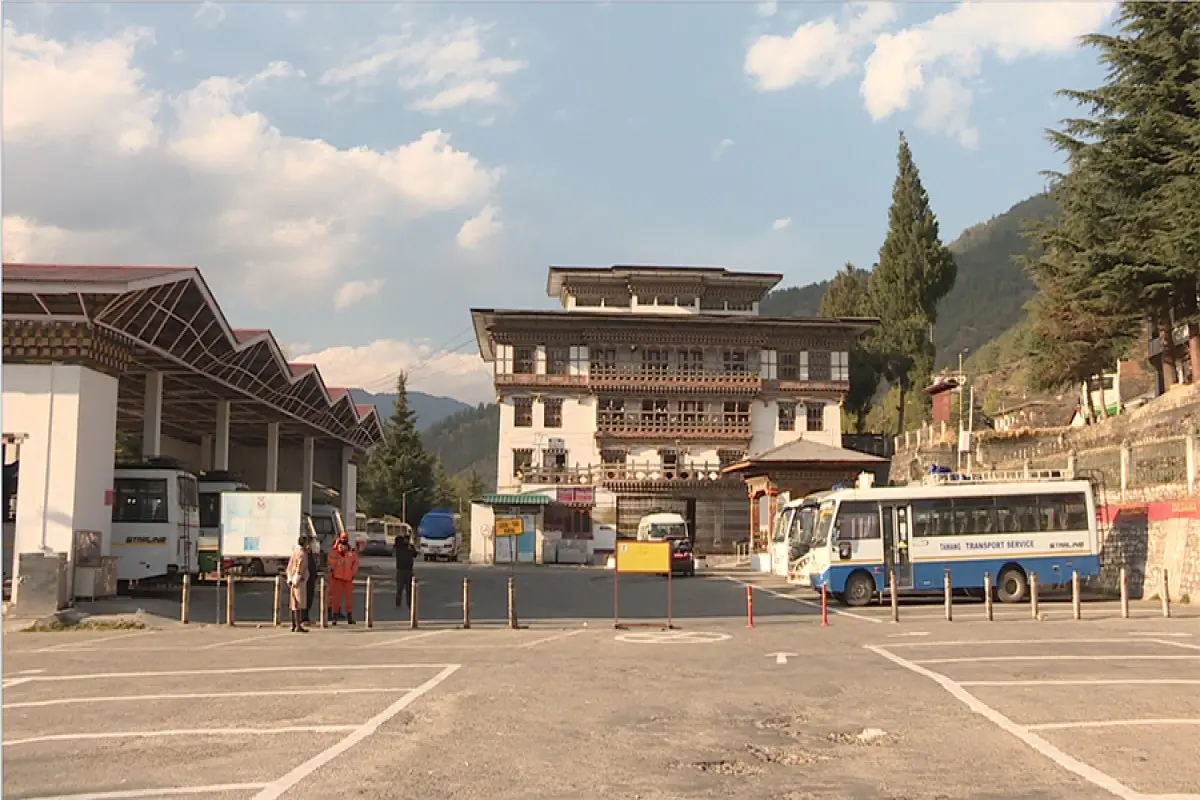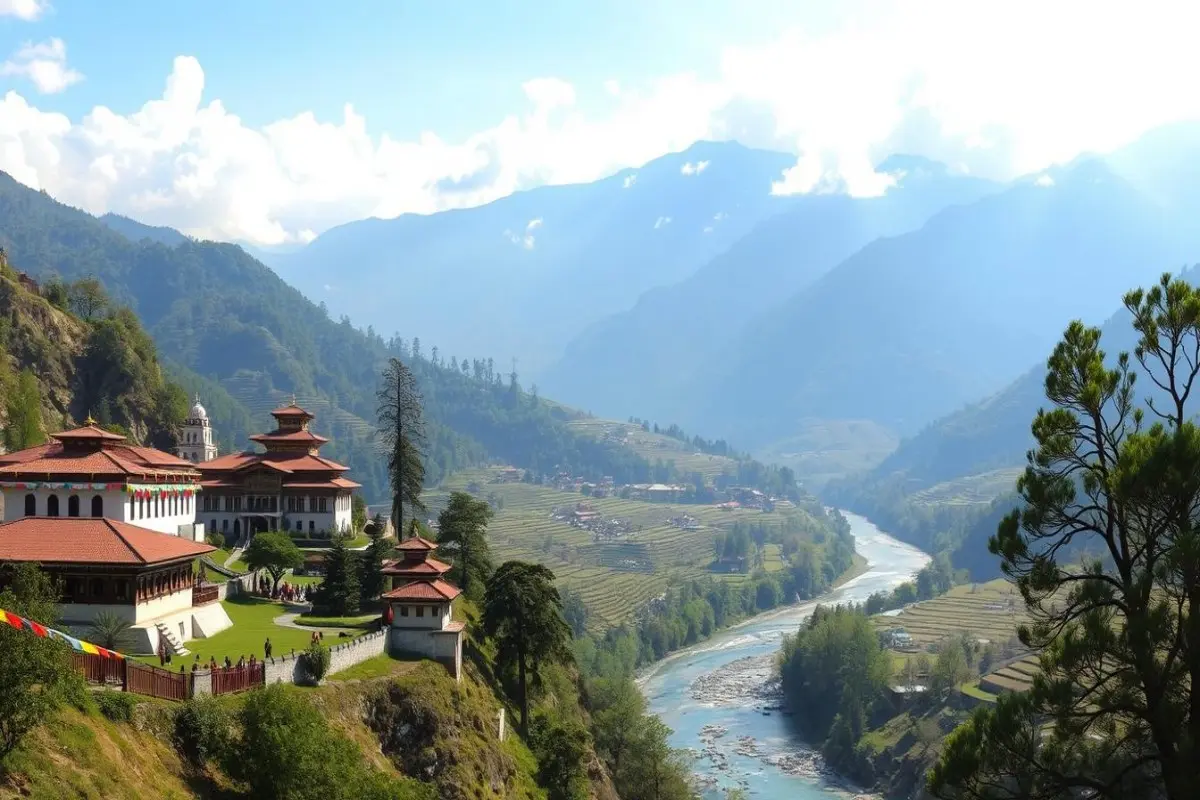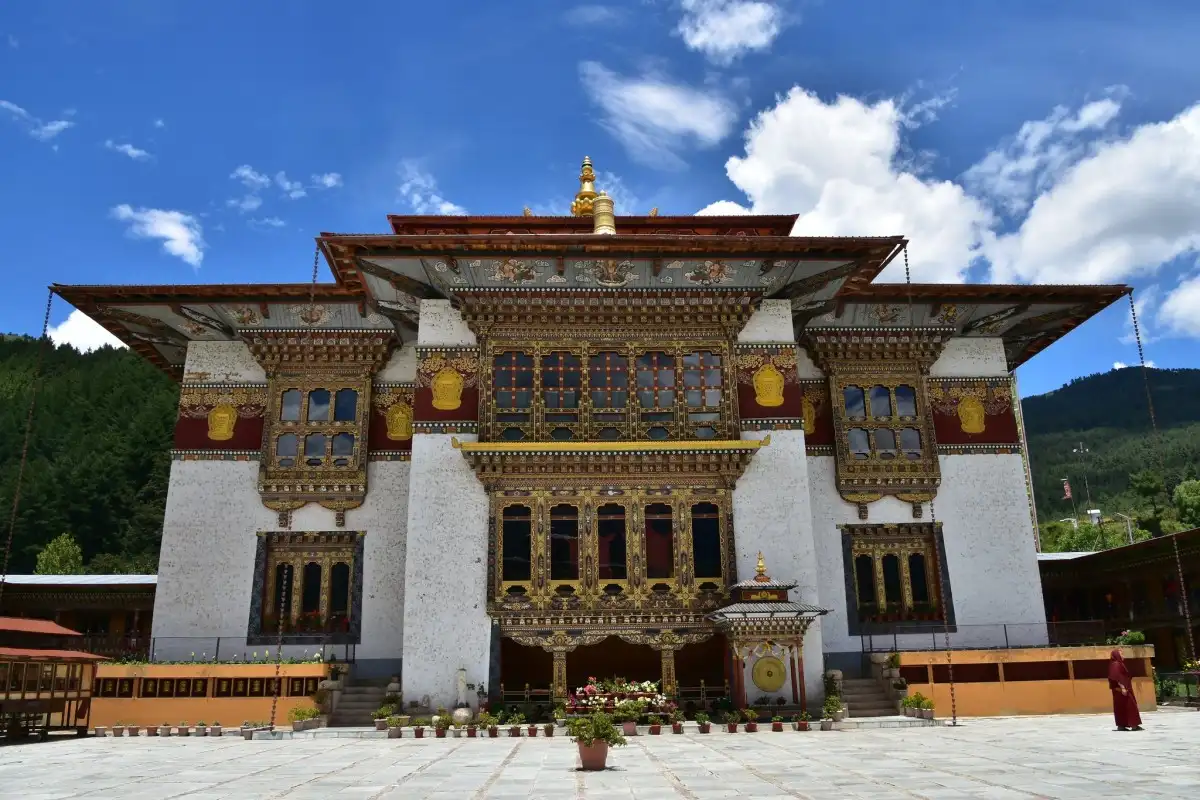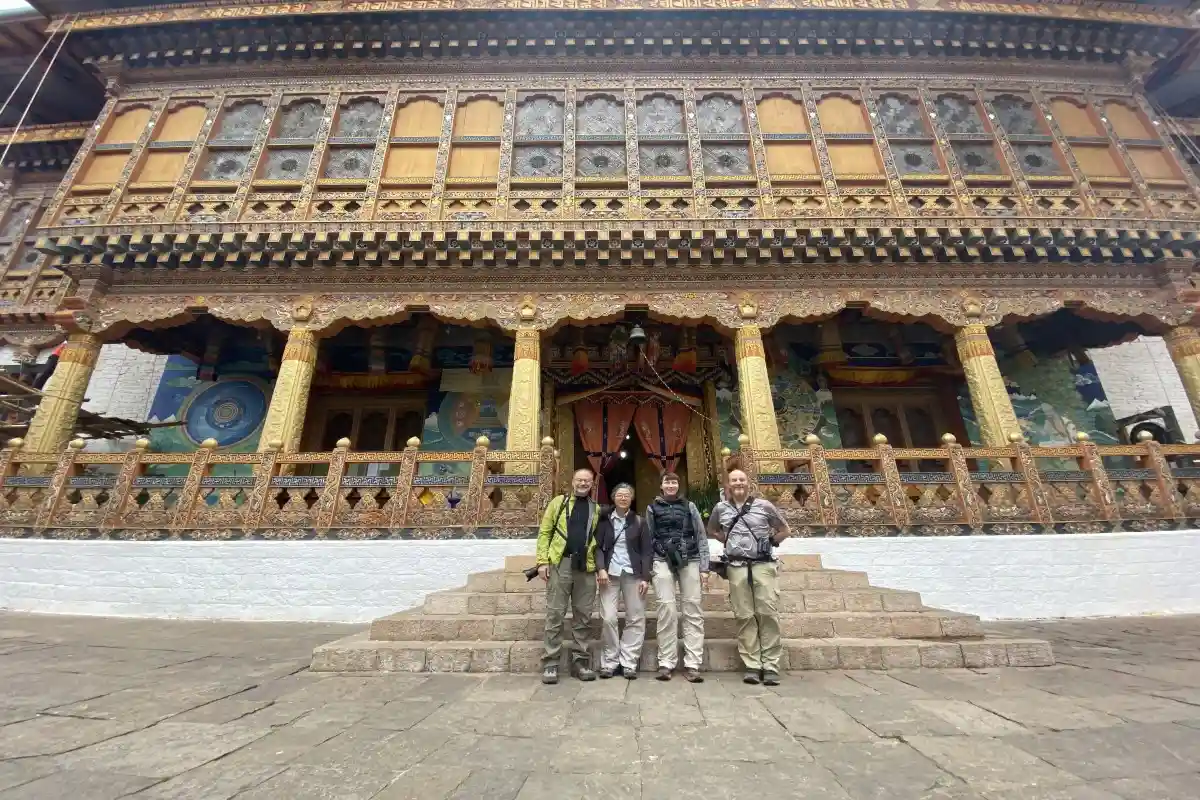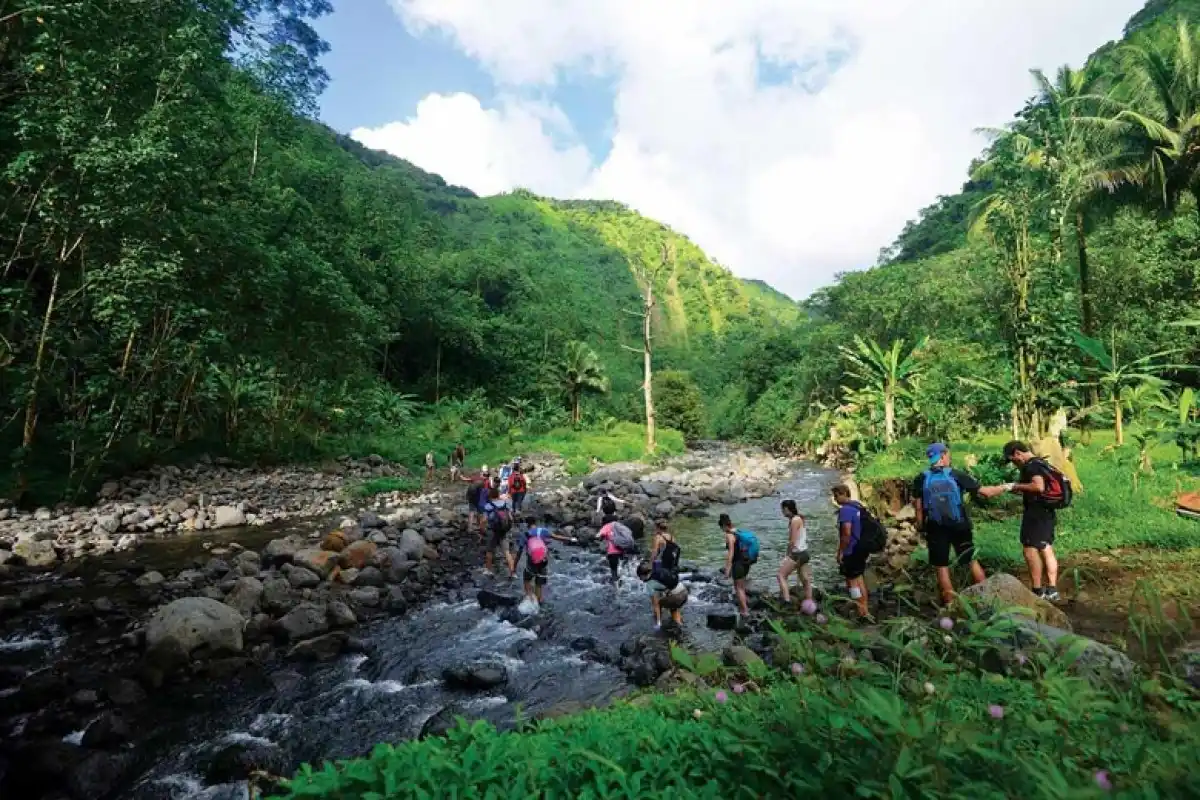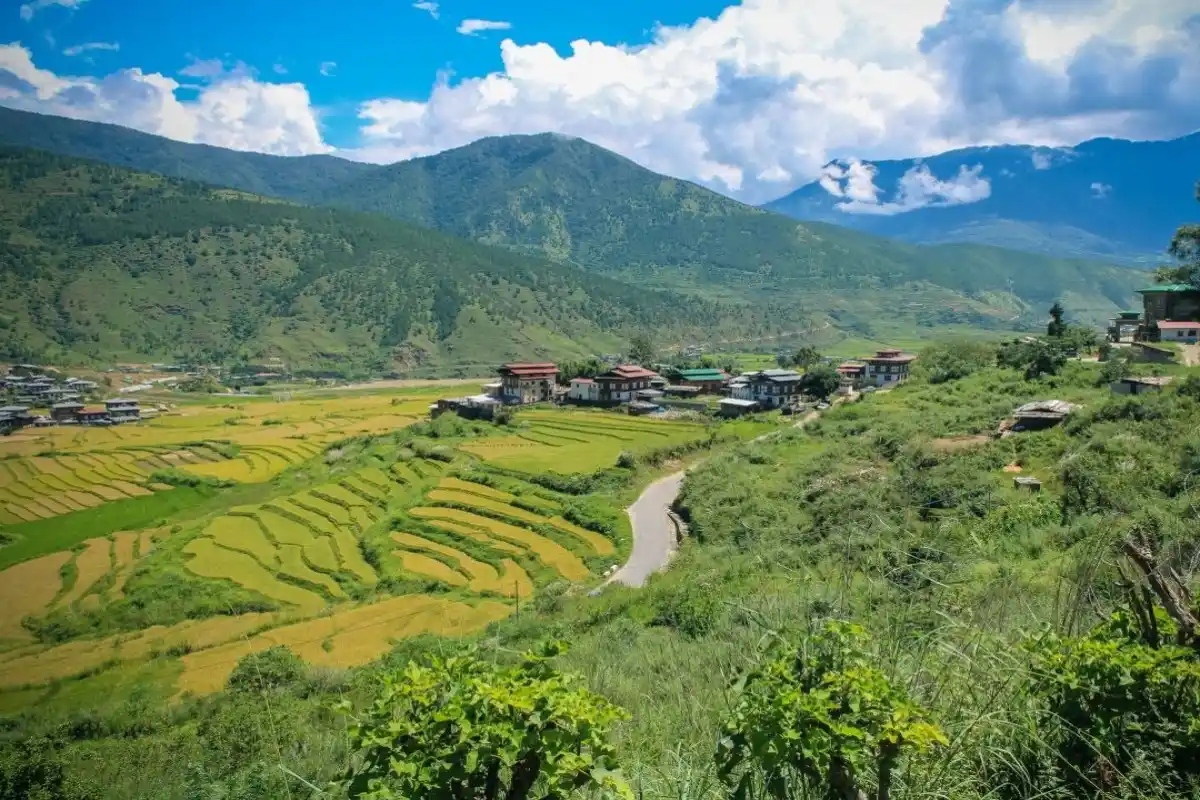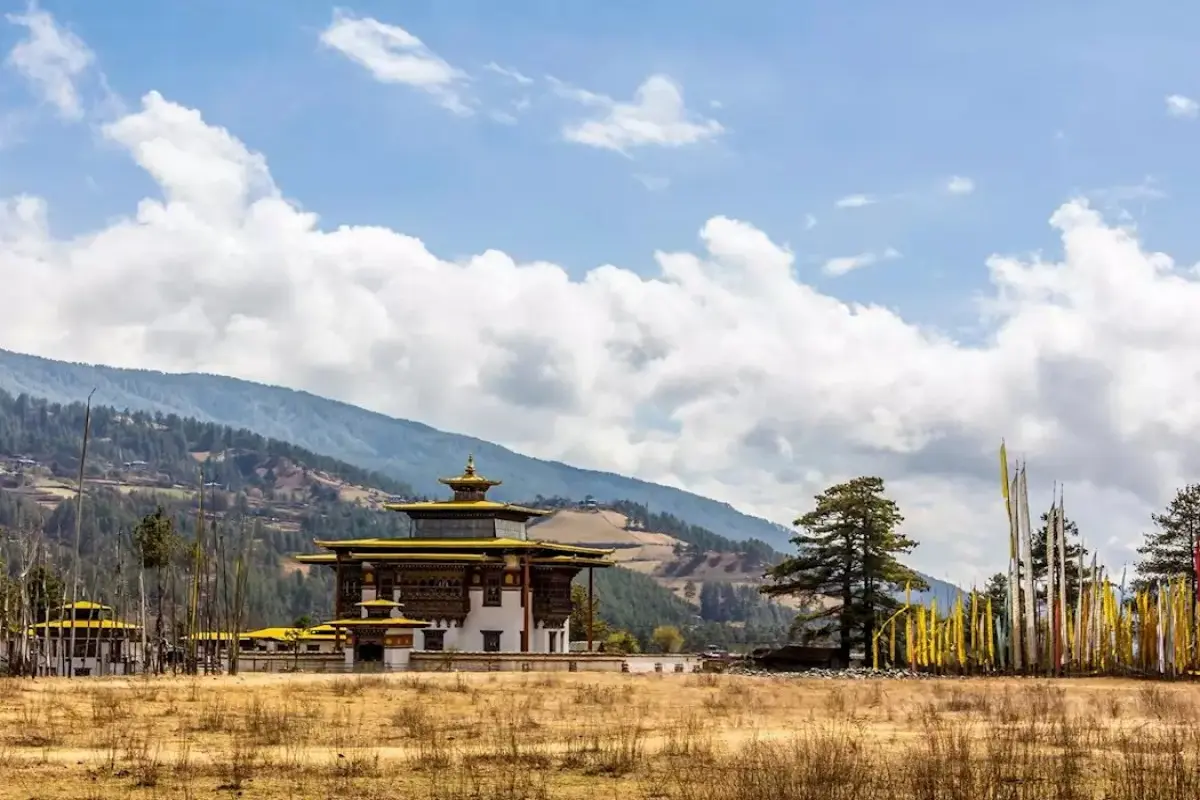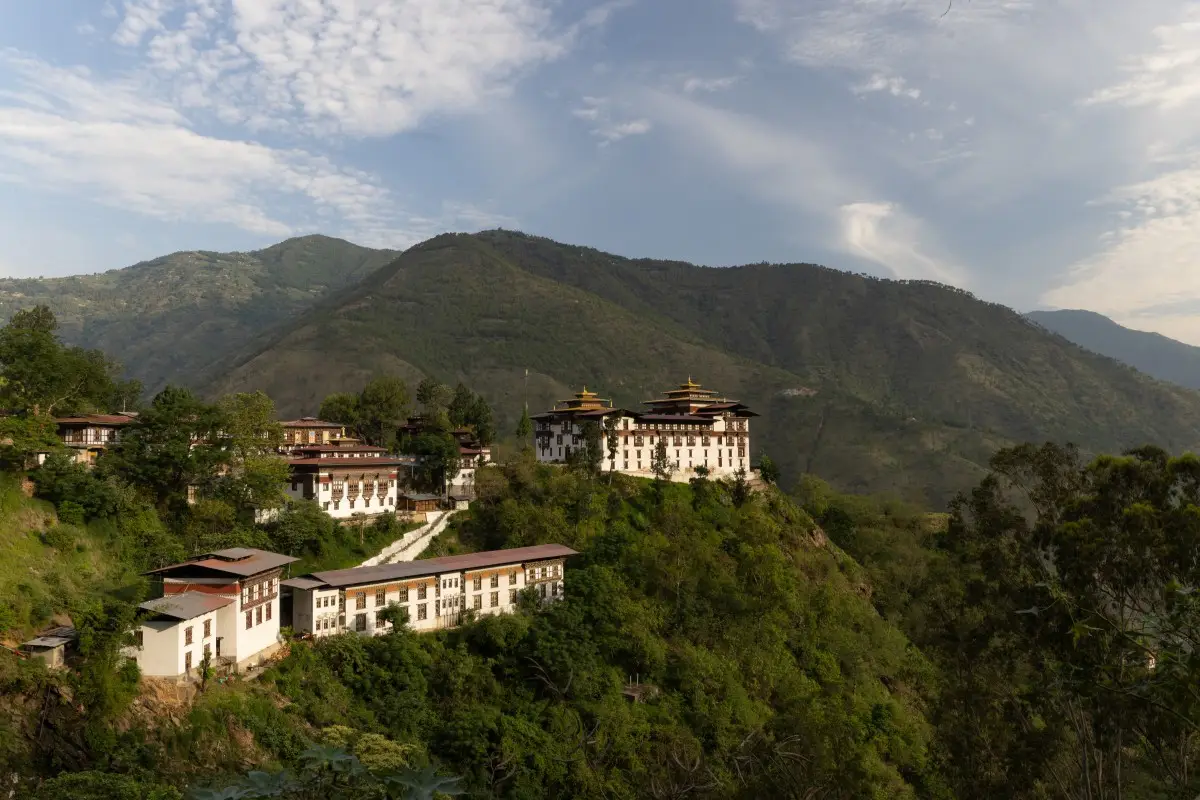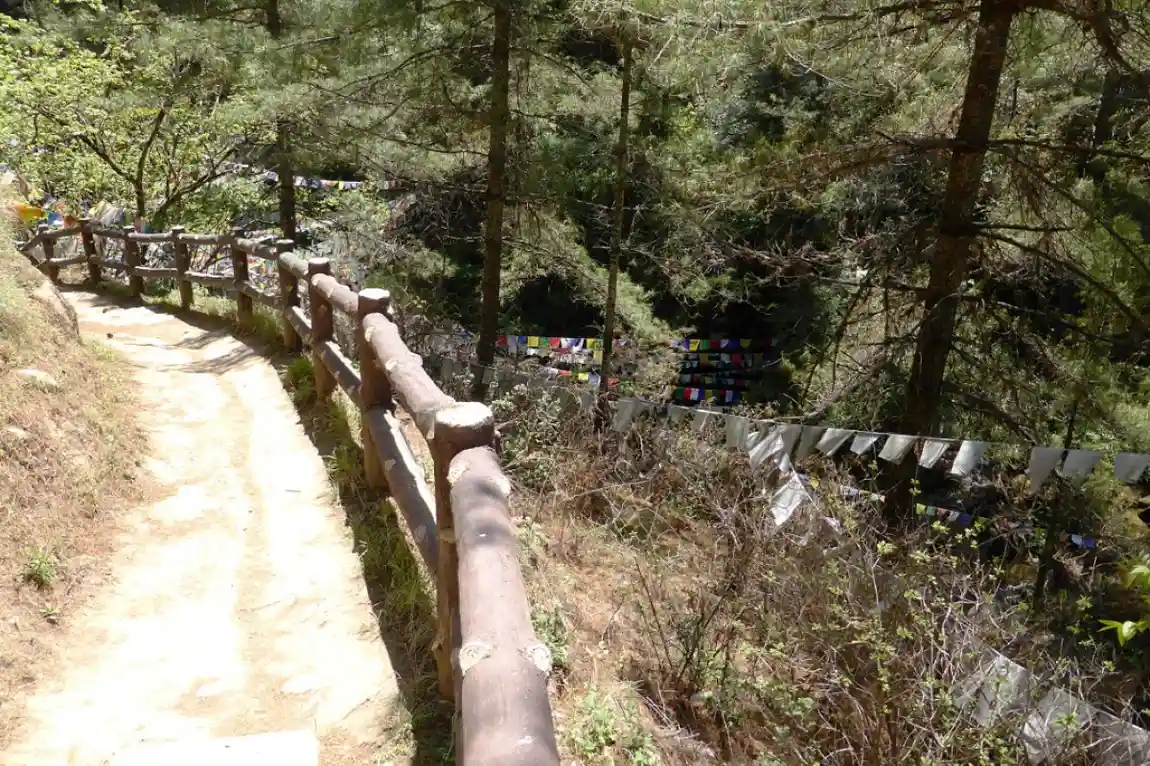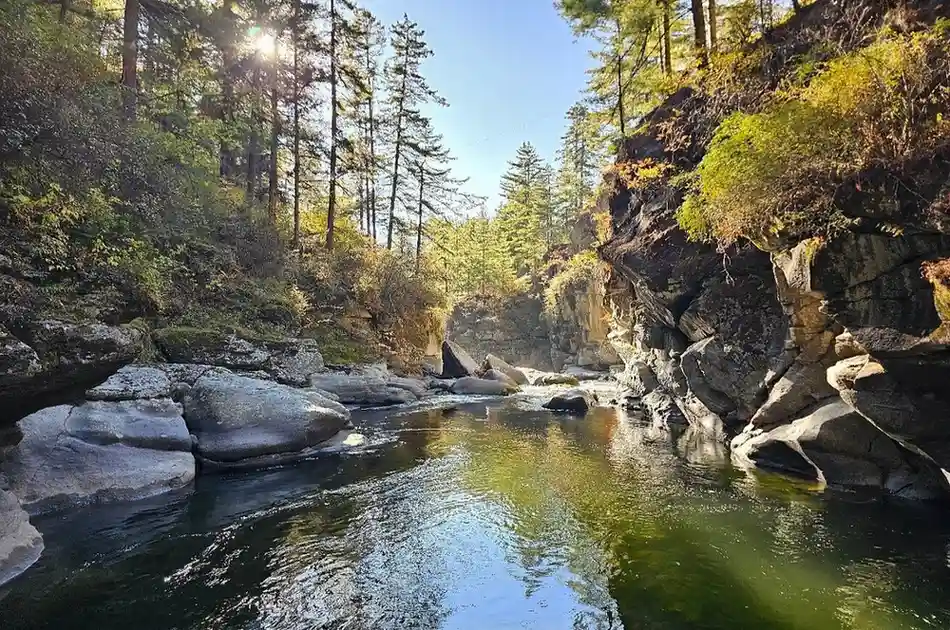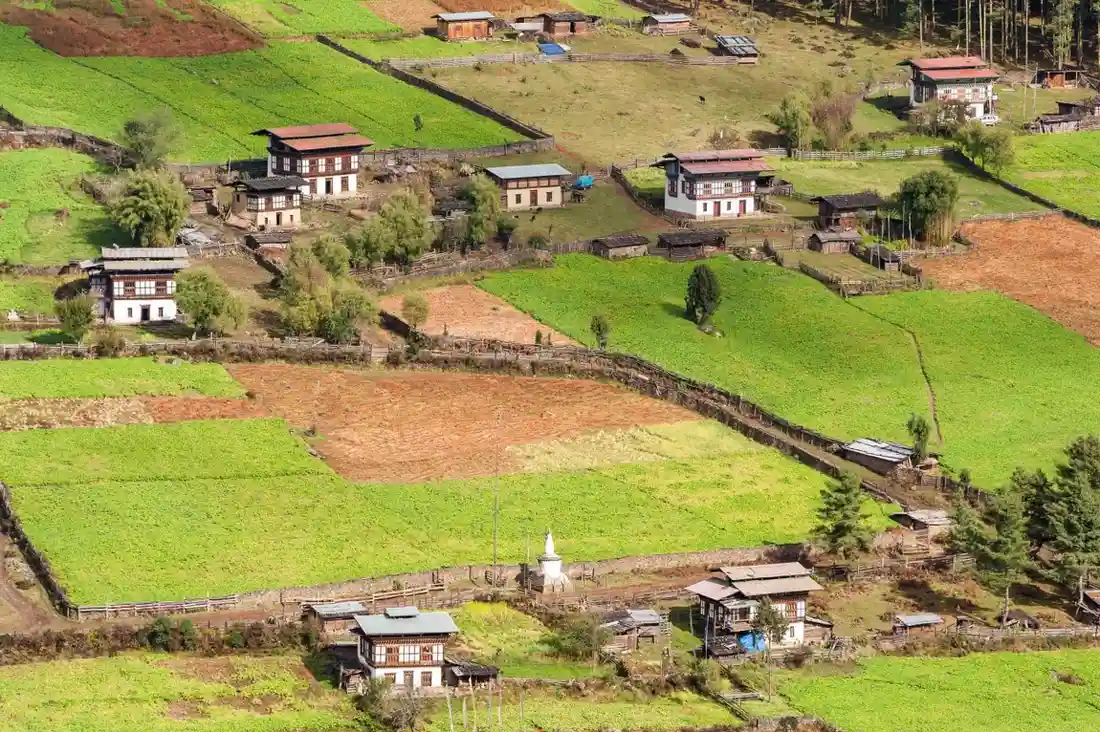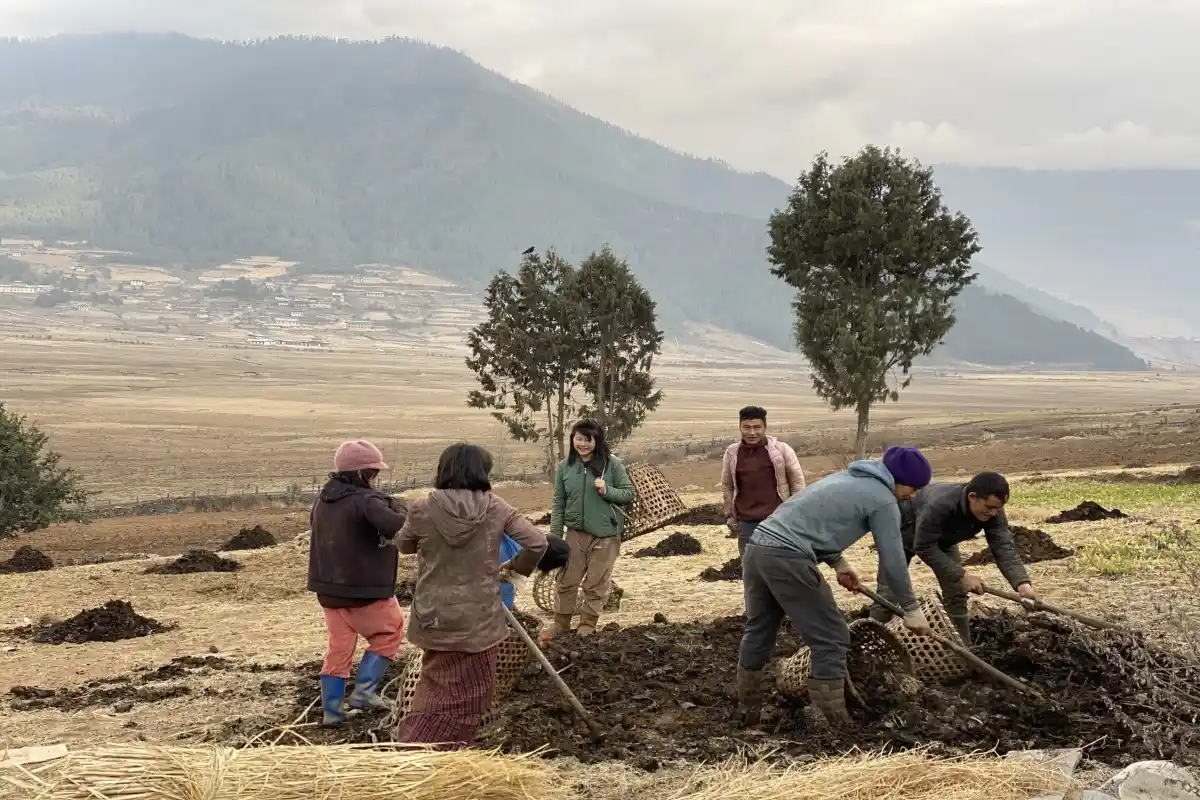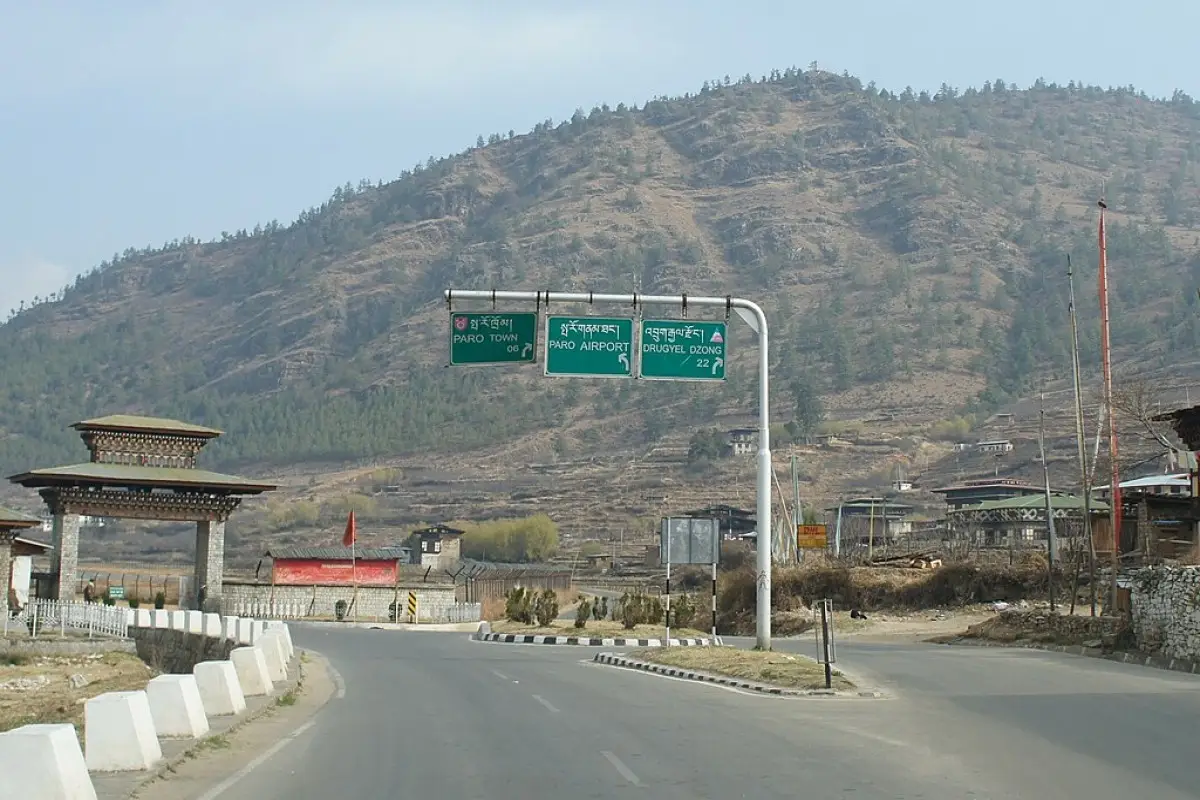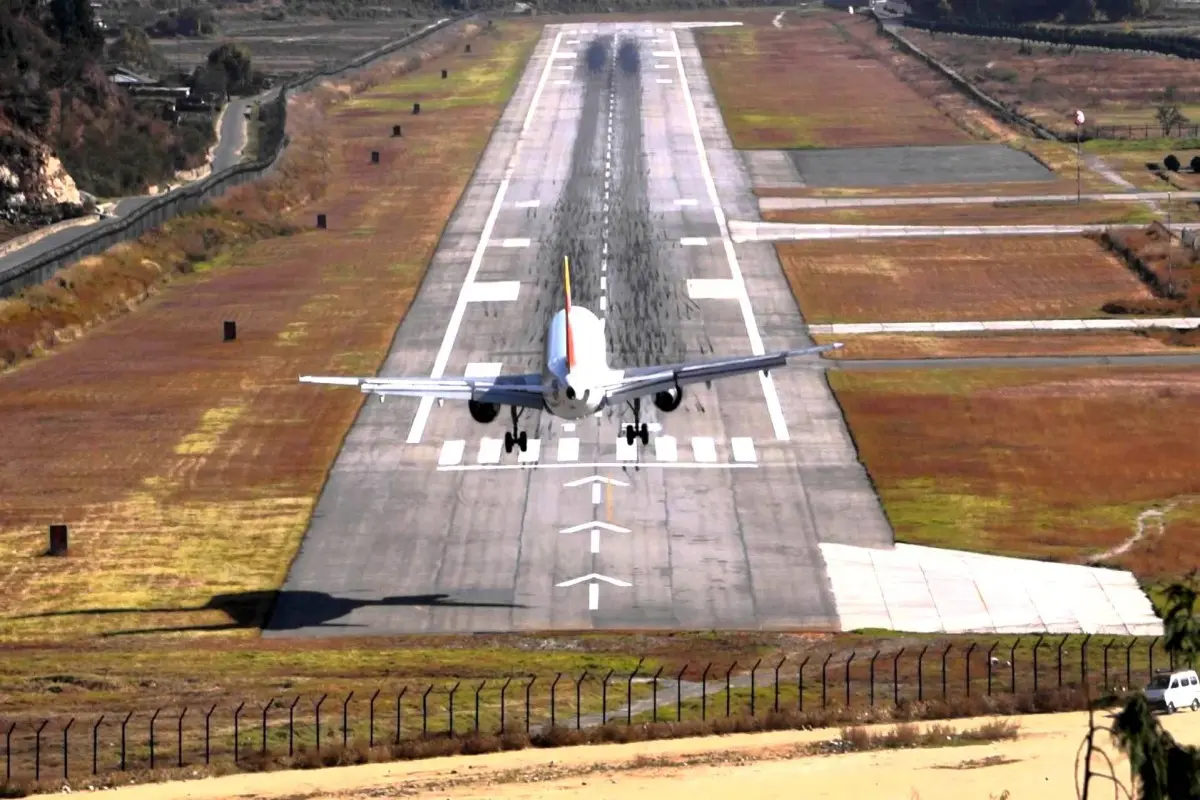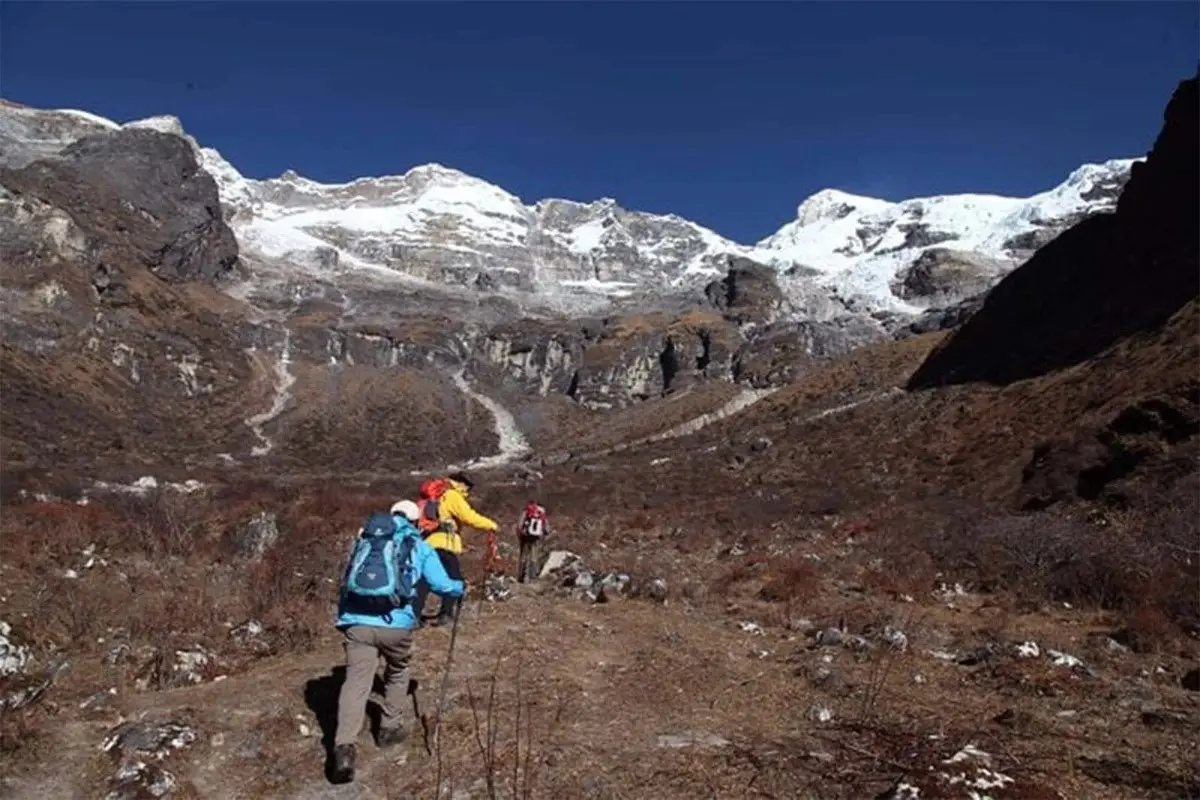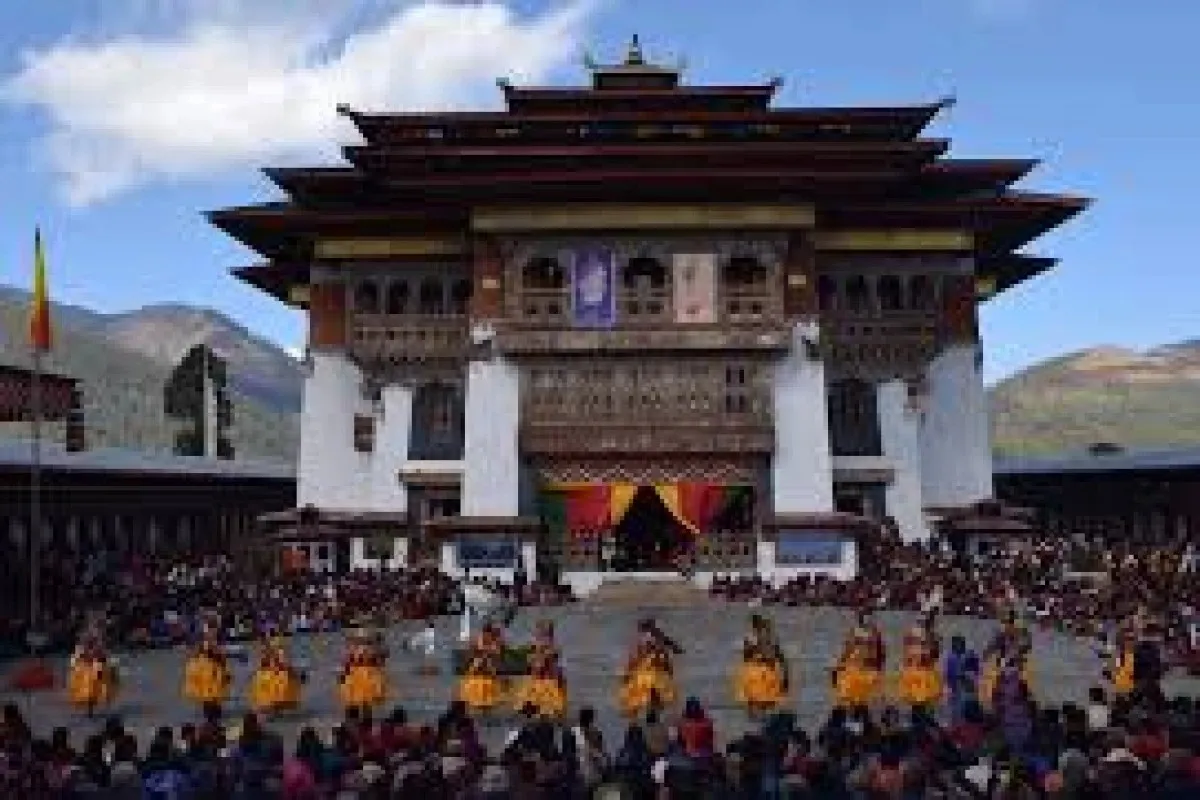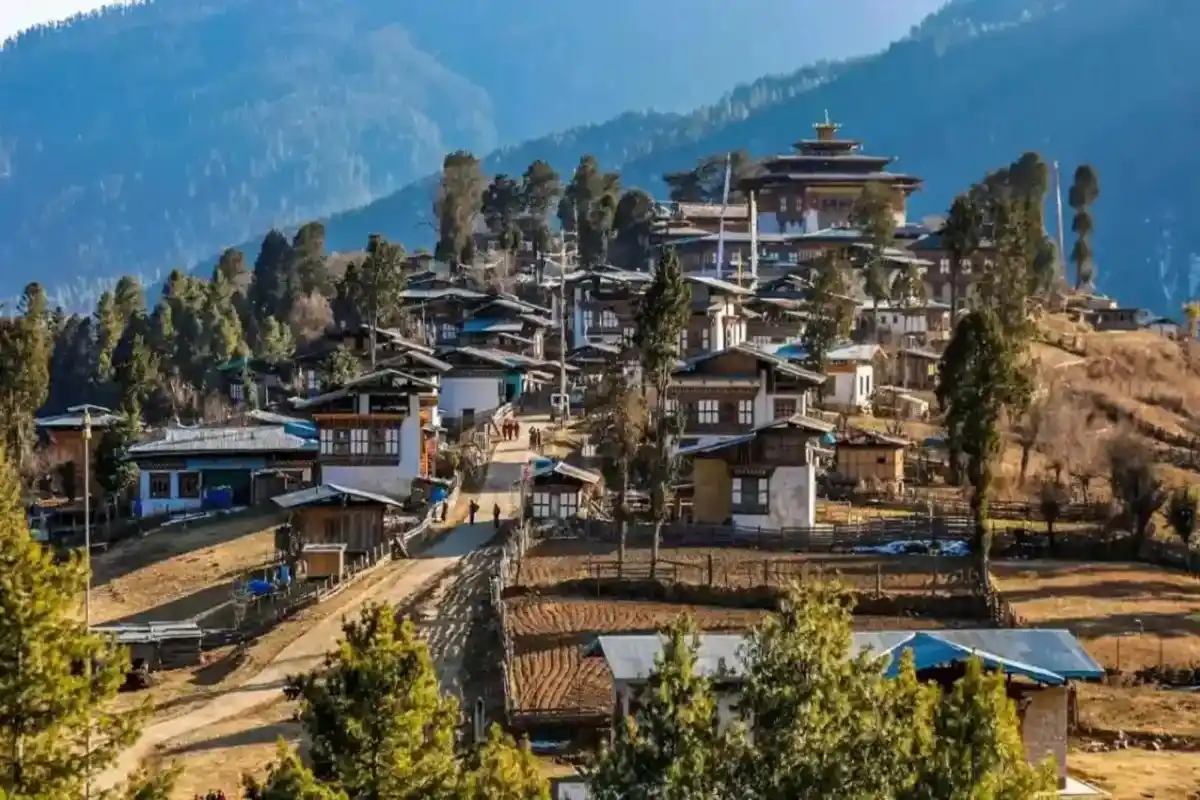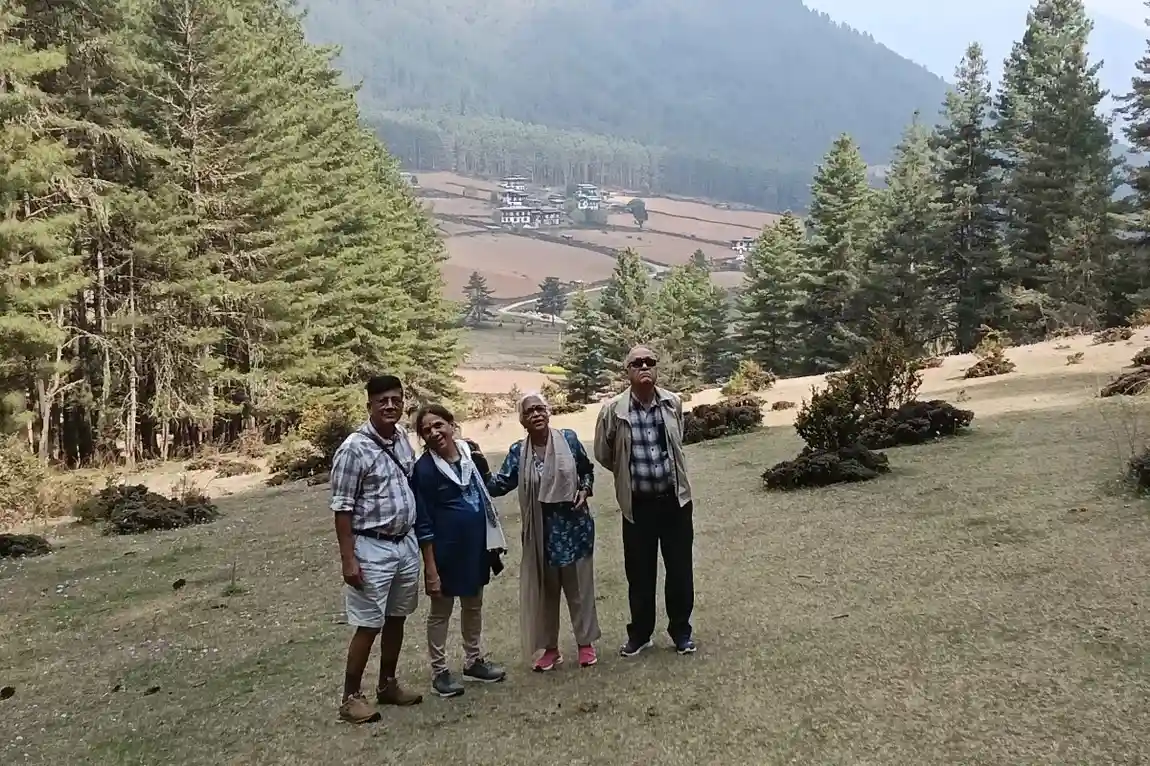Family Trekking and Cultural Tour in Bumthang - 7 Days
The Bumthang Valley in Bhutan gives families the perfect place to discover culture, religion, and beautiful landscapes. The reasons to choose this tour are the scenery, unique attractions, and enjoyable times, which make it appropriate for families.
Quick information
- Explore Burning Lake:
- Authentic Bhutanese Food and Dress:
- Cultural Immersion and Interaction with Locals:
- Spiritual Peace and Meditation:
- Explore Local Handicrafts:
Trip Overview
With your family, you will tour old dzongs, hike in the scenic valleys, and learn about Bhutan’s traditions, staying in places that are enjoyable for you all. Newcomers to Bhutan as well as local visitors will have meaningful experiences on a trip to Bumthang.
The Family Trekking and Cultural Tour in Bumthang is designed for families to visit Bhutan’s spiritual heartland by joining family-friendly activities that blend an interest in culture with outdoor adventures. You can experience Bumthang’s old monasteries, residents, and nature on a safe and comfortable seven-day journey designed for all ages. By visiting sacred spots such as Kurje Lhakhang and Mebar Tsho Lake and taking part in farming as well as easy treks, families enjoy their visit and learn a lot about Bhutan. Because camps are arranged to be thoughtful, respectful, and professionally led, everyone has an enjoyable experience and can learn and grow while in Bhutan. Plan your Bumthang family holiday now and find out why this special valley is loved and admired by travelers the world over.
With your family, you will tour old dzongs, hike in the scenic valleys, and learn about Bhutan’s traditions, staying in places that are enjoyable for you all. Newcomers to Bhutan as well as local visitors will have meaningful experiences on a trip to Bumthang.
The Family Trekking and Cultural Tour in Bumthang is designed for families to visit Bhutan’s spiritual heartland by joining family-friendly activities that blend an interest in culture with outdoor adventures. You can experience Bumthang’s old monasteries, residents, and nature on a safe and comfortable seven-day journey designed for all ages. By visiting sacred spots such as Kurje Lhakhang and Mebar Tsho Lake and taking part in farming as well as easy treks, families enjoy their visit and learn a lot about Bhutan. Because camps are arranged to be thoughtful, respectful, and professionally led, everyone has an enjoyable experience and can learn and grow while in Bhutan. Plan your Bumthang family holiday now and find out why this special valley is loved and admired by travelers the world over.
Short Itinerary
Arrive in Bumthang, explore Jakar Dzong, local markets, orientation session.
Visit Kurje Lhakhang & Tamshing Monastery, river picnic, and traditional dance.
Explore Ura Valley, local crafts, nature playtime, and return to Bumthang.
Family-friendly trek to Jakar Valley, forest walks, riverside fun, and stargazing.
Visit sacred Mebar Tsho Lake, join water blessings, forest picnic, and storytelling.
Farm experience: help with animals, harvest crops, and enjoy a local organic lunch.
Travel back to Paro, explore Paro Dzong or cafes, farewell dinner & celebration.
Price Includes
- Pick-up and drop-off services
We provide a pick-up service from the airport to the hotel on your arrival day and from the hotel to the airport on the departure day.
- Lunch, Breakfast, and Dinner
All meals during the trek will be provided by the company. However, personal food items like coffee, tea, cold drinks, etc, are not included in the package.
- A guide proficient in English
A certified, English-speaking guide will accompany you throughout the trip. The guide will offer information about the trail, culture, nature, and history, and ensure your safety and a smooth experience.
- Comfortable SUV vehicle
A private SUV will be used for road travel before or after the trek. These vehicles are ideal for Bhutan’s hilly terrain and provide a comfortable ride.
- All types of entry costs
This covers all permit fees, monument entrance fees, park fees, and any other official charges required for trekking or sightseeing activities during the tour.
- Professional Drive
We ensure a safe and smooth drive during your tour. We have licensed and experienced drivers for that.
- Sleeping bag and tent
Quality sleeping bags and tents are provided for your comfort and warmth during the camping nights on the trek. So, you don’t have to worry about buying a new one.
- Farewell dinner
A special farewell meal, typically arranged in a traditional restaurant, is offered at the end of the tour to celebrate the journey and thank the participants.
- Evening Tea/coffee with snacks
Each evening, you’ll be served tea or coffee along with light snacks like biscuits and popcorn.
- Drinking Water
Safe and clean drinking water is provided throughout the trek
- Pick-up and drop-off services
We provide a pick-up service from the airport to the hotel on your arrival day and from the hotel to the airport on the departure day.
- Lunch, Breakfast, and Dinner
All meals during the trek will be provided by the company. However, personal food items like coffee, tea, cold drinks, etc, are not included in the package.
- A guide proficient in English
A certified, English-speaking guide will accompany you throughout the trip. The guide will offer information about the trail, culture, nature, and history, and ensure your safety and a smooth experience.
- Comfortable SUV vehicle
A private SUV will be used for road travel before or after the trek. These vehicles are ideal for Bhutan’s hilly terrain and provide a comfortable ride.
- All types of entry costs
This covers all permit fees, monument entrance fees, park fees, and any other official charges required for trekking or sightseeing activities during the tour.
- Professional Drive
We ensure a safe and smooth drive during your tour. We have licensed and experienced drivers for that.
- Sleeping bag and tent
Quality sleeping bags and tents are provided for your comfort and warmth during the camping nights on the trek. So, you don’t have to worry about buying a new one.
- Farewell dinner
A special farewell meal, typically arranged in a traditional restaurant, is offered at the end of the tour to celebrate the journey and thank the participants.
- Evening Tea/coffee with snacks
Each evening, you’ll be served tea or coffee along with light snacks like biscuits and popcorn.
- Drinking Water
Safe and clean drinking water is provided throughout the trek
Price Excludes
- International Airfare
- Visa Charges and Insurance
- Individual expenditures
- Additional-day lodging
- Laundry and telephone expenses
- Tips for the guide and the porter
- International Airfare
- Visa Charges and Insurance
- Individual expenditures
- Additional-day lodging
- Laundry and telephone expenses
- Tips for the guide and the porter
Family Trekking and Cultural Tour in Bumthang Itinerary
Visit Bumthang either by air or land, settle at your hotel, and experience a convenient orientation after your journey. Take a look at the magnificent Jakar Dzong, called the "White Bird Castle" because it is the main administration center and demonstrates Bhutanese traditional architecture. Explore busy markets where families get to see everyday life, try the local produce, and buy handmade items. You’ll spend the afternoon walking slowly around Jakar town, meeting your local guide and having your first traditional meal in Bhutan. Evening events include lessons about the sites and days to come, and an early bedtime to help with acclimatization to the Mount Everest region ahead of visiting the next day.
Start your spiritual journey this day in Kurje Lhakhang, the site where Guru Rinpoche remained in meditation and left his physical imprint. You’ll find three beautiful temples here, all with murals, historic statues, and enjoyable family-friendly courtyards. The next stop is Tamshing Monastery, created by Pema Lingpa, which holds important Buddhist artwork and is still occupied by monks. People can add prayer wheel prayers, watch monks in debate, and observe Bhutanese Buddhist practices. During the afternoon, pilgrims have picnics beside the river, enjoy using their cameras, and interact with the pilgrims from Lourdes. Evenings usually include displays of traditional dance about the monasteries’ important histories and religious values.
Get a glimpse of clean alpine environments and traditional mountain farming by going on a gentle walk in the Ura Valley together with your family. The beautiful Ura Village is home to traditional design, kind communities, and incredible mountain views that are worth exploring. Guests are welcome to view local houses, discover different regional crafts, and find out more about the highlands' culture and habits. Spend a wonderful time with your family, relaxing in front of prayer flags, wildflowers, and the beautiful scenery. In the afternoon, children can hike a little way to see the view, do some photography, and enjoy games in nature. On this day, you go back to your place in Bumthang, discuss the day, and prepare yourself for tomorrow’s trek to Jakar Valley.
Start a journey with the whole family to explore clean and beautiful spots from Bumthang to Jakar Valley, a trek designed for average fitness levels and children. Travelers along the trail enjoy sightings of flowing rivers, cross through forests filled with pine and rhododendron, and find plenty of stops that offer spectacular vistas of the valley. Visitors may watch several bird species, gather fascinating stones and leaves, and gain information about local nature from experienced guides. Don’t forget to bring healthier snacks for the trail and enjoy breathtaking scenes with your meal. At the riverside walk, families can join in on getting wet, skipping stones, or taking pictures of the area’s nature. Since you stay in the same place at night, family time is warm, evening stargazing is possible, and reflecting on the day’s events is easy.
Find out more about Mebar Tsho Lake, as it is believed that the treasure found here by Pema Lingpa is why this site is still popular with pilgrims. Getting to the site involves walking through the forest, teaching families about gentle exercise and beautiful scenery. Find out about the bravery of the treasure finder and what fascinating religious artifacts were discovered in the holy waters. Everyone in the family is welcome to join water blessing ceremonies, write down their wishes, and relax with a moment of quiet meditation beside the lake. You can enjoy close family time with nature watching, nice walks, and photographing all kinds of plants and wildlife in the forest. Guests enjoy a second trip to the forest, visits to caves for meditation, and a special picnic lunch after breakfast. Evening includes storytelling on Bhutan’s legends and traditional spiritual practices.
Get a taste of pure Bhutanese life by walking through traditional farms and joining in on farming tasks that are done by local families each season. Talk to farmers who follow programs to traditionally grow red rice, barley, potatoes, and vegetables with organic methods learned from their ancestors. When at the farm, children can help with animal feeding, egg gathering, or help out with vegetable harvesting. Gain insight into how traditional food is saved, compost is used, and how farming is related to Buddhism. Experience lunch made of ingredients picked on the farm, which gives your meal a unique and genuine character. In the afternoon, visitors take part in fun local activities, observe craftsmen, and have some cultural conversations with farm families. Evening is finished with dinner and preparing clothes for the next morning.
Admire more of Bhutan’s beauty on your way from Bumthang to Paro, allowing you to gather your experiences from the week before you leave. Once you reach Paro, families may stop by Paro Dzong or browse the town’s nice cafes and stores for things to remember the trip by. You’ll find time for a break in the afternoon, upload some photos from the mountain, and if possible, tour the National Museum. Highlights of the last day are a unique family farewell dinner, cultural presentations, and celebrations of what was achieved on the trip. Get your guide’s contact details and those of some fellow trekkers, and collect a certificate for what you experienced after climbing down. Later in the day, we help you pack, confirm all your bookings, and give you the last bits of cultural advice.
Know Before You Travel
-
Explore Burning Lake:
The lake is known as the Burning Lake because a famous treasure finder, Pema Lingpa, discovered holy treasures there some centuries ago. Families who share the site get to enjoy peace and beauty without harm. Forest paths in this area make hiking simple, offering everyone a way to listen to Bhutanese stories and learn about local worship traditions.
-
Authentic Bhutanese Food and Dress:
Eat Bhutanese delicacies and help your family sample the gho and kira. Try using local ingredients such as red rice, yak cheese, and spices when you attend a cooking demonstration. Getting to know locals in their homes gives a better understanding and appreciation for the district’s customs.
-
Cultural Immersion and Interaction with Locals:
Take pleasure in Bumthang by walking around communities, trying to farm, and making art. Central Asian families are a part of making butter tea, weaving, and taking care of daily farm activities. Discussing with residents can help guests gain a new understanding of the area and also make friends.
-
Spiritual Peace and Meditation:
Bumthang is a great destination for anyone hoping to lead their family on a calmer trip, as its prayer sites and monasteries are quite peaceful. Enroll in meditation courses, spin the prayer wheel, and reflect in a quiet spiritual place. No matter who you are, young or old, here you can easily find peace, relax, and feel a spiritual bond.
-
Explore Local Handicrafts:
Find out about the creative work of Bumthang’s local artisans by joining workshops where you can explore how these refined products are made. Tourists will see that craftspeople use methods handed down over time and, if they want, they can take home real traditional gifts. Local groups gain help, people learn about various cultures, and there are unique stores to experience.
-
Earned the name of Bhutan:
Earned the name of Bhutan’s spiritual heartland, Bumthang Valley is among the country’s most impressive places to visit. Here, children can see hills full of old trees, rivers flowing calmly through fertile grassland, and the old Bhutanese design balancing with the mountain setting. Each of the sub-valleys – Chokhor, Tang, Ura, and Chhume – has its attractive sights and cultural charms. You will find golden barley fields, apple orchards, and classic farmhouses across this region, which look very different during each season. Being at high elevation means the air is fresh, views are beautiful, and traditions are still alive, so the atmosphere is different from what most tourists see.
-
Bumthang is perfect for families:
Bumthang is perfect for families and adventures in spring (March to May) and autumn (September to November). From March, rhododendrons start blooming, the air is clear, and it becomes the perfect time for trekking or being outdoors. During September to November, autumn offers clear skies, clear views, and pleasant weather for going sightseeing. Since summer has a few rainy days, there are many green views and not as many tourists during this season. It’s fine to live through winter, but you should have warm clothes, and the holidays are perfect for going to festivals and joining in with cultural events. Parents may choose a destination by thinking about the season, the activities available, and special events taking place.
Map-family-trekking-and-cultural-tour-in-bumthang
Download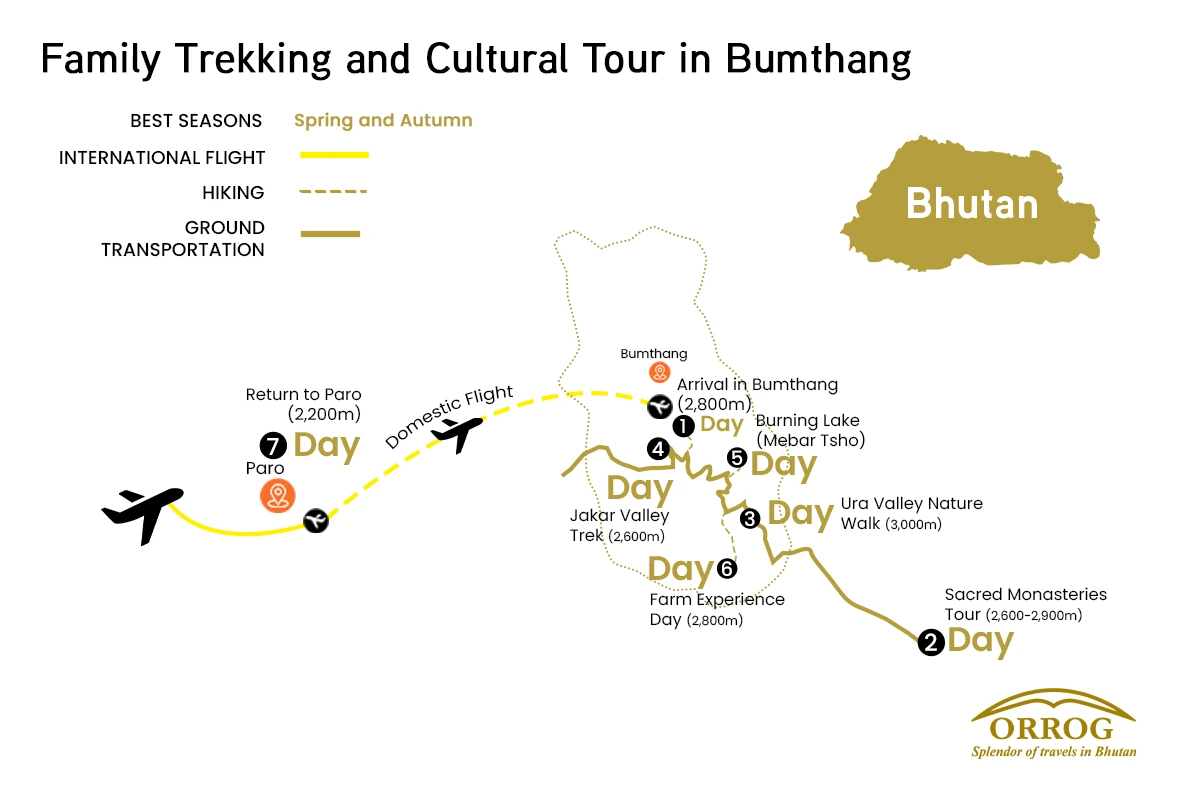
Family Trekking and Cultural Tour in Bumthang
FAQs for Family Trekking and Cultural Tour in Bumthang
Because our Bumthang tour involves light activities and excursions, it is available to children aged 6 and up. Day 4's trek is on leveled trails at about 2,600m above sea level, which healthy children can handle. We offer easy explanations for children, allow for shorter walking routes where convenient, and set the tour schedule to suit you and your family. Children who are 6 years old or younger can take part if special arrangements are made and another person watches them.
Select warm clothes for mornings and nights, suitable shoes for walking, and use umbrellas or raincoats if you travel during monsoon weather. Essentials you need are sun protection, personal medicine, camera gear, and modest clothing for visiting the monasteries—wear something that covers your arms and legs. Once you book with us, we email you a packing list that covers all seasons and has cultural tips for temple visits.
At 2,600-3,000 meters above sea level, Bumthang could give visitors with health problems slight altitude discomfort. Most families do well if they pace themselves, drink plenty of water, and go easy on their first day there. Our staff keep an eye on family members for signs of altitude sickness and modify our plans as needed. Families that have anyone with a heart or respiratory illness should ask their doctor for advice and share the information when they book with us.
You’ll find that the trekking sections are easy for all ages, feature maintained trails and gentle slopes, and offer many places to rest. Most days, you should plan for 2-4 hours of walking, which is enjoyable for families with normal fitness. If anyone in the family does not want to walk a section, there are other ways to transport them. They look at the strengths and weaknesses of the group and revise our steps, always with your safety in mind.
Temples should be entered with your head and feet uncovered, you should dress modestly, and you should try to be quiet in those spaces. Each place has its own photography rules, and guides explain what is and is not allowed where you are. If you meet locals, it’s nice to greet them in Dzongkha, and accepting any hospitable gesture reflects your strength in local customs. The dos and don’ts of giving gifts to monks will be taught during your cultural orientation.
Bhutan follows Bhutan Time (BTT), which is GMT +6 hours.
No, Bhutan does not use daylight saving time.
Yes, if your phone has roaming and automatic time settings enabled.
Bhutan is 15 minutes ahead of Nepal and 30 minutes ahead of India.
Both 12-hour and 24-hour formats are commonly used. Clarify with your guide if unsure.
You need a visa and all necessary permits for your trip. These documents can not be received on the day of your arrival, so they must be processed before coming here. After you book a trip with us, we will manage these papers for you. Your Bhutan visa is arranged by Orrog as part of the package.
The main way to come to Bhutan is through Paro International Airport, which is well-connected to cities like Bangkok, Delhi, Kathmandu, and Singapore. Most people arrive by air, but if you plan to come via road, you can enter through Phuentsholing, located on the southern border with India, which is the most commonly used entry point.
It is recommended to apply for the visa at least 20 days before your planned departure date so that there is enough time for processing your Bhutan visa, finalizing your itinerary, and arranging your guides and transportation. Although visa processing itself is relatively fast once payment is received, early preparation helps avoid delays and ensures availability, especially during peak seasons (spring and autumn).
You don’t require a passport-size photo for the visa, but it is wise to carry at least 2–4 recent passport-sized photographs during your trip. These may be needed for local permits, registration, or when applying for a local SIM card upon arrival in Bhutan.
Yes, you can lengthen your stay in Bhutan either before or after your trip. Bhutan’s tourism model requires visitors to pay a Sustainable Development Fee (SDF) and a daily package cost, so any extra days will involve additional charges. Extensions are a great opportunity to explore cultural sites in Paro, Thimphu, or even add another short trip or day hike.
Yes, Bhutan requires full tour payment in advance before your visa can be processed and issued. The government of Bhutan regulates this policy to ensure that all travel arrangements are confirmed through a licensed Bhutanese tour operator. We are a licensed tour operator that ensures you have everything you need for a trouble-free trip.
Any personal expenses are not covered in the package like:
- Tips for your guide and other staff
- Bottled drinks and snacks(personal expense)
- Souvenirs or local crafts
Credit cards are easily accepted in major cities like Paro and Thimphu. But in remote areas, you may not have access to a card or an ATM. So, it is best to carry some cash before heading for the trip.
Tipping is not mandatory, but it is a widely appreciated gesture and a customary way to show gratitude for good service. The tipping guideline would be to give USD 5-10 per day as a tip for the guides and other staff.
Paro International Airport is the only international airport in Bhutan. It is well connected by flights from cities like Bangkok, Delhi, Kathmandu, and Singapore.
Yes, airport pick-up and drop-off are included in the package. We will have your guide and driver meet you at the airport and transport you to your hotel.
While Bhutan's roads are mostly paved, some parts are narrow, winding, and occasionally affected by weather. However, we ensure your travel is safe, well-maintained, and driven by an experienced professional throughout the journey.
Once you arrive in Paro, we will arrange private ground transportation to the starting point as we pass through lush valleys and traditional villages. So, you don’t have to worry about any transportation services.
Yes, it is very safe to travel even with children in Bhutan. Roads are well-maintained, and the pace of travel is generally relaxed and child-friendly.
We will usually travel in comfortable, private vehicles with experienced drivers. All ground transportation is included in your package.
The Bhutanese Ngultrum is used in Bhutan. All local transactions during the trip will be in BTN.
US Dollars (USD) are generally accepted at larger hotels, souvenir shops, and tour operators, particularly in Paro and Thimphu. However, it’s advisable to convert your currency to BTN for general purchases in rural areas. Other currencies like the Euro or the Pound are not commonly accepted directly.
No, credit or debit cards are not accepted on the trip, as it takes you through remote regions with no banking or electronic payment access. All trip-related payments like accommodation, meals, permits, etc, are paid in advance.
You can exchange foreign currency at the Paro International Airport, at banks, or through licensed money changers in cities like Thimphu and Paro. It's best to exchange enough cash before heading out on the trip.
The national language is Dzongkha, but many Bhutanese also speak English. If you speak English and are worried about communicating with the local people, you will have your guide as a translator.
Yes, all licensed tour guides in Bhutan are required to speak fluent English. Many are also trained in other languages such as German, Japanese, or French. Communication during the trip will be smooth and clear in English.
Most signboards, tourist maps, and information brochures are written in English, especially in tourist destinations like Paro, Thimphu, and trailheads. Directional signs along routes are often labeled in both Dzongkha and English.
No, learning Dzongkha is not at all needed for the trip, but knowing a few basic words like "Kuzu zangpo la" (Hello) or "Kadrinche la" (Thank you) is a good way to interact with the locals.
Language barriers are minimal, as your guide will handle all communication with locals and support staff. Your guide will translate for you during your interaction with the locals.
To greet people, you can greet with locals “Kuzu zangpo la” (Hello) by performing a slight bow. Most common greetings include physical greetings, such as shaking hands less visible, especially in rural areas.
Yes, but remember to seek permission, especially when taking photos of monks, locals, or temples. Please note that clicking photos is not allowed at most religious sites.
Visitors should dress modestly and respectfully. This means:
- Covering shoulders and knees
- Removing hats and sunglasses
- Not wearing shorts or sleeveless tops
This applies to both men and women.
Yes, Bhutanese society is deeply rooted in Buddhism and tradition. Here are some key taboos:
- Do not point your feet at people or sacred objects
- Never touch anyone on the head, as it is considered sacred
- Walk clockwise around temples, stupas, and religious monuments
- Avoid public displays of affection
While gifts are not expected, they may be accepted graciously if given with respect. It is advisable to consult with the guide before giving out anything.
Bhutan typically uses Type C, Type D, and Type G electrical outlets. Standard safe voltage is 230V and frequency is 50Hz; therefore, ensure that your equipment is compatible with this voltage.
Indeed, it is highly advised to take along a universal travel adapter, particularly one to fit a variety of types of plugs, because plugs can be different in a hotel or a guesthouse.
Yes, souvenirs can be bought in Paro or Thimphu before or after the trip.
Some popular souvenirs include hand-woven textiles (kira and gho fabric), prayer flags, thangka
You can do some gentle bargaining in local street markets. However, in government-run shops and fixed-price stores, prices are usually non-negotiable.
Only some larger shops in cities like Paro and Thimphu accept credit cards. The remote areas might not have a card payment option, so we suggest that you carry some cash.
Yes, you can easily purchase a SIM card upon arrival in Bhutan. We will assist you with the process, and you'll need a passport copy and a passport-sized photo.
No, internet access is not available during the trip. However, Wi-Fi is available in hotels in Paro and Thimphu before and after the trip.
B-Mobile (by Bhutan Telecom) and TashiCell are the two main service providers. B-Mobile tends to have better coverage in rural and mountainous areas
Since the weather can be unpredictable and temperatures can vary drastically, layered clothing is essential. You should pack:
- Base layers (thermal tops and bottoms)
- Insulating layers like fleece or down jackets
- Waterproof and windproof outer layers
- Warm hats, gloves, and neck gaiters for freezing conditions
- Moisture-wicking socks and weatherproof trekking boots
Nighttime temperatures can be extremely cold, especially at high-altitude places. So you need to have enough clothing to keep you warm.
The weather is clear with mild daytime temperatures during spring and autumn.
Tsechu is a religious festival held in honor of Guru Rinpoche, featuring mask dances, rituals, and traditional performances. It's a colorful and spiritual experience for all ages.
Yes, festivals are family-friendly and offer a unique cultural experience for children, although large crowds can be overwhelming for very young kids.
Modest, respectful attire is recommended. Traditional Bhutanese dress (Gho/Kira) is encouraged and can be arranged for you.
Yes, all tours include certified, English-speaking guides who are knowledgeable in Bhutanese history and culture.
You can learn about the Bhutanese culture through local interactions, homestay visits, cooking classes, traditional art workshops, and attending local festivals and religious ceremonies.
Reviews & Ratings
-
Guarantee -
Thimphu,Bhutan -
975+17160228
Ready to Explore Bhutan?
Start your journey today and discover the magic of Bhutan with our expert guides and carefully crafted tours.
Book This Trip
-
No booking or credit card fees -
Best price guarantee -
Full customize trip
Ask a Question
Feel free to ask us anything about this tour. A travel expert will then get back to you as soon as possible
Ready to Explore Bhutan?
Start your journey today and discover the magic of Bhutan with our expert guides and carefully crafted tours.
